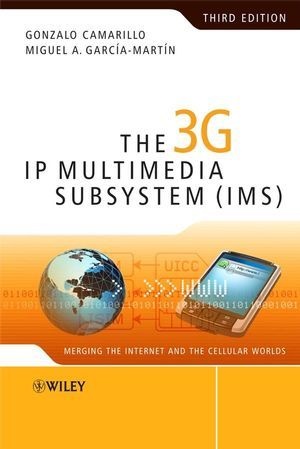Read more
Informationen zum Autor Gonzalo Camarillo has extensive industry experience in IP technologies through his role as a systems expert for Ericsson from 1998 to 2001 in Sweden and Finland. He then spent a year as a researcher at Columbia University before returning to Ericsson as a Senior Expert in 2002 where he has worked ever since. Miguel A. Garcia-Martin has industry experience also working for Ericsson in Spain, England and Finland before transferring to Nokia where he is currently a Senior Systems Expert. Klappentext The IMS (IP Multimedia Subsystem) is the technology that merges the Internet with the cellular world. It makes Internet technologies such as the web, email, instant messaging, presence, and videoconferencing available nearly everywhere at any time.The third edition of this bestselling book is fully updated and provides comprehensively expanded content, including new chapters on emergency calls and on Voice Call Continuity (VCC). As well as this, The 3G IP Multimedia Subsystem (IMS) presents updated material including a comprehensive picture of Session Initiation Protocol (SIP) as well as its applicability to IMS. As most of the protocols have been designed in the IETF, this book explains how the IETF developed these protocols and describes how these protocols are used in the IMS architecture.This is an indispensable guide for engineers, programmers, business managers, marketing representatives and technically aware users who want to understand how the IMS works and explore the business model behind it.* New chapters on emergency calls, Voice Call Continuity (VCC), service configuration (XCAP, XDM), and conferencing* Fully updated throughout, including Policy and Charging Control (PCC), QoS, Presence, Instant Messaging, Multimedia Telephony Services, and Push-to-talk over Cellular (PoC)* Describes the IP Multimedia Subsystem from two different perspectives: from the IETF perspective, and from the 3GPP perspective.* Provides details on the latest policy technology and security architecture* Written by experienced professionals in the field. Zusammenfassung Third edition of this best-selling guide to IMS: fully revised, and updated with brand new material The IMS (IP Multimedia Subsystem) is the technology that merges the Internet with the cellular world. It makes Internet technologies such as the web, email, instant messaging, presence, and videoconferencing available nearly everywhere at any time. Inhaltsverzeichnis Foreword by Stephen Hayes. Foreword by Allison Mankin and Jon Peterson. Preface to the Third Edition. Preface to the Second Edition. Preface to the First Edition. Acknowledgements. Part I Introduction to the IMS. IMS Vision: Where Do We Want to Go? 1.1 The Internet. 1.2 The Cellular World. 1.3 Why do we need the IMS? 1.4 Relation between IMS and non-IMS Services. 2 The History of the IMS Standardization. 2.1 Relations between IMS-related Standardization Bodies. 2.3 Third Generation Partnership Project. 2.4 Third Generation Partnership Project 2. 2.5 IETF-3GPP/3GPP2 Collaboration. 2.6 Open Mobile Alliance. 3 General Principles of the IMS Architecture. 3.1 From Circuit-switched to Packet-switched. 3.2 IMS Requirements. 3.3 Overview of Protocols used in the IMS. 3.4 Overview of IMS Architecture. 3.5 Identification in the IMS. 3.6 SIM, USIM, and ISIM in 3GPP. 3.7 Next Generation Networks (NGN). Part II The Signaling Plane in the IMS. 4 Session Control on the Internet. 4.1 SIP Functionality. 4.2 SIP Entities. 4.3 Message Format. 4.4 The Start Line in SIP Responses: the Status Line. 4.5 The Start Line in SIP Requests: the Request Line. 4.6 Head...

